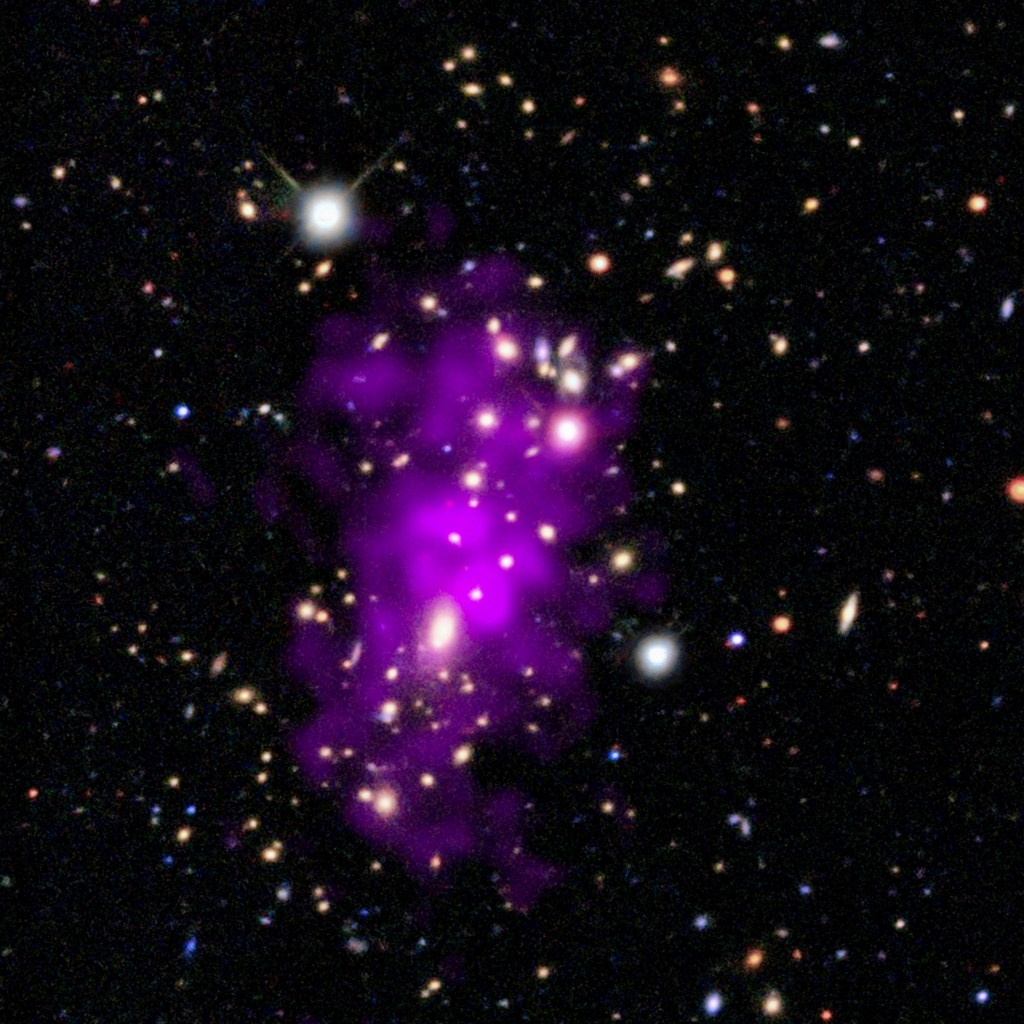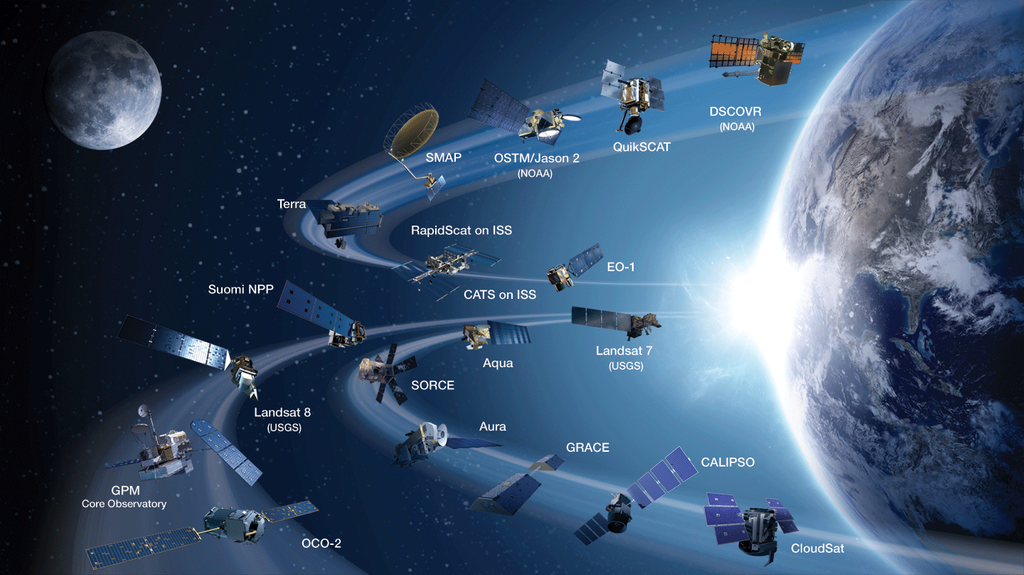1 min read
Our Neighboring Galaxy’s Unusual Core

The images and illustration reveal that the Andromeda Galaxy's (M31's) core is composed of a ring of old, red stars and a newly discovered disk of young, blue stars. The disk is trapped within a supermassive black hole's gravitational field. The mass of Andromeda's monster black hole is 140 million times greater than that of our Sun.
The illustration at bottom, right shows the structure of Andromeda's unusual core and is based on Hubble images of the region. The disk of blue stars is nested inside the larger ring of red stars. The tiny black dot within the blue disk is the monster black hole.
Astronomers deduced the structure of Andromeda's core from Hubble images taken over the past decade. The image at upper, right, taken with the Wide Field and Planetary Camera 2, shows that the galaxy appears to have two cores. Normal galaxies only have one core. Astronomers now believe
that Andromeda has one core. The two bright blobs are actually the ring of red stars and the disk of blue stars. In fact, the bright blob on the right has a bluish cast.
The image at left is a view of the entire Andromeda Galaxy. The active core is in the center of the galaxy. Andromeda is 2.5 million light-years from Earth.
About the Object
- R.A. PositionR.A. PositionRight ascension – analogous to longitude – is one component of an object's position.00h 42m 44.3s
- Dec. PositionDec. PositionDeclination – analogous to latitude – is one component of an object's position.41° 16' 9.4"
- ConstellationConstellationOne of 88 recognized regions of the celestial sphere in which the object appears.Andromeda
- DistanceDistanceThe physical distance from Earth to the astronomical object. Distances within our solar system are usually measured in Astronomical Units (AU). Distances between stars are usually measured in light-years. Interstellar distances can also be measured in parsecs.About 2.5 million light-years (0.8 Megaparsecs)
- DimensionsDimensionsThe physical size of the object or the apparent angle it subtends on the sky.The WFPC2 image of M31's nucleus is 11.6 arcminutes (150 light-years or 46.5 parsecs) across.
About the Data
- Data DescriptionData DescriptionProposal: A description of the observations, their scientific justification, and the links to the data available in the science archive.
Science Team: The astronomers who planned the observations and analyzed the data. "PI" refers to the Principal Investigator.The WFPC2 science data are from the HST proposal 5236: J. Westphal (Caltech), T.R. Lauer (NOAO/AURA/NSF), S. M. FABER UCO/Lick Observatory, W. Baum (Univ. of Washington) The STIS science data are from the HST proposal 8018: R. Green (NOAO/KPNO) and G. Bower (NOAO). The science team includes: R. Bender (Univ. of Sternwarte, Munich; Max Planck Inst., Garching; Univ. of Texas at Austin), J. Kormendy (Univ. of Texas at Austin), G. Bower (CSC/STScI), R. Green (NOAO), J. Thomas (Univ. of Sternwarte, Munich; Max Planck Inst., Garching), A.C. Danks (Bowie, MD), T. Gull (NASA/GSFC), J.B. Hutchings (NRC of Canada), C.L. Joseph (Rutgers Univ.), M.E. Kaiser (JHU), T.R. Lauer (NOAO/AURA/NSF), C.H. Nelson (UNLV), D. Richstone (Univ. of Michigan), D. Weistrop (UNLV), and B. Woodgate (NASA/GSFC). - InstrumentInstrumentThe science instrument used to produce the data.12.5-inch Richey-Chrétien telescope (left), and HST>WFPC2 and HST>STIS (HST data, top right)
- Exposure DatesExposure DatesThe date(s) that the telescope made its observations and the total exposure time.2002 (left), and June 18-20, 1995, Exposure Time: 3.7 hours (WFPC2) and July 23-24, 1999, Exposure Time: 6.3 hours (STIS)
- FiltersFiltersThe camera filters that were used in the science observations.HST Data WFPC2: F160BW, F300W (U), F555W (V), F814W (I) STIS: G430L, G750M
- Object NameObject NameA name or catalog number that astronomers use to identify an astronomical object.M31, Andromeda Galaxy, NGC 224
- Object DescriptionObject DescriptionThe type of astronomical object.Spiral Galaxy, Galaxy Core
- Release DateSeptember 20, 2005
- Science ReleaseHubble Finds Mysterious Disk of Blue Stars Around Black Hole
- Credit

Related Images & Videos

Andromeda's Active Core
This artist's concept shows a view across a mysterious disk of young, blue stars encircling a supermassive black hole at the core of the neighboring Andromeda Galaxy (M31). The region around the black hole is barely visible at the center of the disk. The background stars are the...

M31's Intriguing Nucleus
Hubble telescope observations have yielded insights into the Andromeda Galaxy's (M31's) complex nucleus. New images from Hubble uncovered a disk of young, hot, blue stars swirling around a supermassive black hole. The disk is nested inside an elliptical ring of older, cooler,...

Mysterious Disk of Blue Stars Around M31's Black Hole
A zoom diving deep into the nucleus of the Andromeda Galaxy (M31) then dissolving into an animation of a concentration of red stars. Pushing deeper into the animation reveals a disk of young blue stars swirling around a black hole. Hubble's Space Telescope Imaging Spectrograph...
Share
Details
Claire Andreoli
NASA’s Goddard Space Flight Center
Greenbelt, Maryland
claire.andreoli@nasa.gov




































